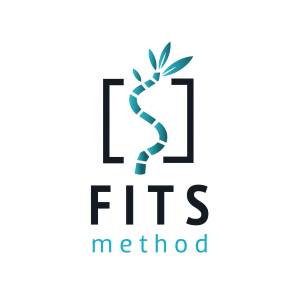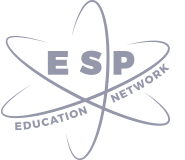

FITS Method was created in 2004 by Marianna Białek PT, PhD and Andrzej M’hango PT PhD, D.O. for needs of therapy of children with postural disorders, scoliosis and Scheuermann’s disease. The FITS Method has a coherent concept, taking into account the principles of myofascial dysbalance treatment. Therapy begins with improved proprioception, relaxation of shorth, tight hypertonic muscles, then strengthening of weak muscles, to obtain the best conditions for the implementation of corrective patterns and autocorrecting the posture . The FITS Method consists of three main stages of correction: Stage I: Examination of patient using classical clinical assessment but also in terms of using FITS approach. Education of patient to help him become aware of his/her deformity. Stage II: Preparation for correction: sensory motor balance training, detection and elimination of myofascial tension, which restricts three-plane corrective movements. Stage III: Three-dimensional correction, building, and stabilization of corrective patterns in open, closed biokinematic chains and functional positions. “Complex diagnostics and therapy of postural defects, Scheuermann’s disease and scoliosis according to FITS Method” – Intended for physiotherapists, medical doctors, orthotics . Trainings are conducted in Warsaw
Key, innovative aspects of the FITS method include, among others :
- Make the child aware of existing deformation of the spine and the trunk. Psychological aspect – the child is a partner, not a subject of therapy.
- Sensory motor balance training to improve nervous system control over the muscles function.
- Examination of the ability of active and passive corrective movement.
- eleasing myofascial structures which limit three-plane corrective movement.
- Primary curve correction by creating functional compensation.
- Building and stabilization of corrective movement patterns in open, closed biokinematic chains and functional positions .
“Complex diagnostics and therapy of postural defects, Scheuermann’s disease and scoliosis according to FITS Method”
Part I
- FITS Method history
- FITS Method – the main principles, stages of correction building
- Phasic and tonic muscles. Biomechanical model of the spine
- Foot – theory, feet defects, foot examination.
- Sensory motor balance training
- Trigger
- Trigger
points – theory, indications and contraindications for trigger point therapy point therapy
- manual mobilization
- positional release
- integrated neuromuscular inhibition technique (INIT)
- transcutaneous stimulation
- Calf muscle relaxation techniques:
- Peroneus longus, tibialis anterior and posterior muscles
- Gastrocnemius and soleus muscles
- Patient examination
- Knee joint – theory, knee defects:
- Hyperextension of the knee
- Genu valgus
- Genu varus
- Thigh muscle relaxation techniques:• Thigh extensors (semimembranous, semiteninous, biceps femoris) • Thigh adductors (longus, magnus and gracilis)
- Correction patterns for pelvis and lower limbs for Th/L scoliosis
- Thigh muscle relaxation techniques:
- Thigh abductors (tensor fasciale latae)
- Thigh flexor (rectus femoris)
- Pelvis examination
- Pathomechanics of scoliosis (theories and classification of curvatures, compensation mechanism)
- Risk factors for scoliosis progression
- Lower limb length examination
- Correction patterns for scapula and upper limbs for Th scoliosis
- Piriformis muscle relaxation
- Lower trank stabilization
- The influence of gravity on scoliosis in different starting positions – therapeutic analysis
- Home therapy and its meaning
The course program includes the presentation of patient’s treatment by the instructors.
Part II :
- Theoretical exam from the course Part I
- Correction patterns for 2 curve scoliosis, exercises in closed and open biokinematics chains
- Relaxation techniques for ilio-lumbalis muscle
- Diaphragm – theory, relaxation of the diaphragm dome, tendon center, arcuate ligaments,diaphragmatic cruses
- Relaxation techniques for pectoralis muscles
- Chest relaxation techniques, derotation breathing exercises
- Trunk muscles relaxation techniques : latissimus dorsi, erector spinae
- Correction shift examination for Th/L scoliosis in sitting and standing position
- Relaxation of quadratus lumborum muscle
- Increasing the Th / L scoliosis shift towards correction
- Pelvic therapy: pelvic derotation techniques through the iliac bone
- Pelvic therapy: sacral techniques
- Breathing derotation exercises in correction patterns at various starting positions
- X-ray analysis
- Scheuermann’s disease
- Structural and functional compensation
- Correction patterns for 3 curve scoliosis
Part III
- Theoretical exam from the course Part II
- Relaxation of the trapezius and levator scapulae muscles
- Neck muscles relaxation techniques:
- Suboccipitale muscles
- Sternocleidomastoid muscle
- Scaleni muscles
- Torticollis as a dysfunction that predisposes the formation and development of scoliosis
- Conservative treatment of scoliosis – braces (lecture by Prof. PhD, MD Tomasz Kotwicki – Head ofthe Clinic of Spinal Diseases and Pediatric Orthopedics)
- Surgery for scoliosis – (lecture by Prof. PhD, MD Tomasz Kotwicki – Head of the Clinic of SpinalDiseases and Pediatric Orthopedics)
- Changing correction patterns after building functional compensation
- Fascial dysfunctions associated with scoliosis
- Main principles of muscle chains according to Myers
- Relaxation techniques for scoliosis – Superficial Back Line (SBL)
- Relaxation techniques for scoliosis – Superficial Front Line (SFL)
- Relaxation techniques for scoliosis – Deep Front Line (DFL)
- Relaxation techniques for scoliosis – Lateral Line (LL)
- Increasing correction shift for Th/L and L scoliosis based on myofascial chains
- Relaxation techniques for scoliosis – Spiral Line (SL).
- Derotation techniques for Th and Th/L scoliosis in side lying and sitting positions
- Self-correction
- Practical exam
19. Long-term therapy planning. Consolidation of more difficult techniques 20. Course summary, answers to participants questions
21. Graduation certificates
The third part of the course includes 3 x 1 hour of practical work of course participants with patients. At the end of the practical part – discussion of patients treatment.
The entire training in the FITS Method includes about 20% of theory and 80% of practical exercises by participants and work with the patient.
Dates of a courses:
Sign In:
Otwarte
Part 1
9 - 12 March 2024
Part 2
15 - 18 April 2024
Part 3
20 - 22 May 2024
Sign In:
Otwarte
Part 1
23 - 26 May 2024
Part 2
9 - 12 September 2024
Part 1
28 - 30 October 2024
Opinie kursantów
Zobacz również

FITS
Diagnostyka i terapia skoliozy wg Metody FITS (Funkcjonalna Indywidualna Terapia Skolioz)
Read more
ESP Muscle Balance and Sport Training – kolano
Prewencja i rehabilitacja urazów stawu kolanowego
Read more
OMPT
OMT, czyli program Ortopedycznej Terapii Manualnej z akredytacją IFOMPT, jest międzynarodowym programem szkoleniowym dla fizjoterapeutów.
Read moreSign up
- 1. Choose course
- /
- 2. Complete the data
- /
- 3. Summary






 info@ortokursy.pl
info@ortokursy.pl